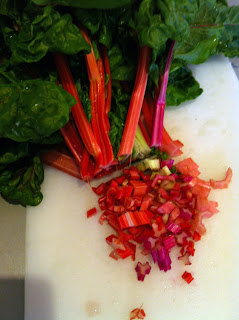
I never used to have a lot of success with sweet pastry.
The pastry was either so crumbly that when I tried to roll it out it just refused to cooperate. If I did manage to roll it out, when I tried to lift it to put it in the pie dish it tore. So my pies became something of a crazy patchwork with all the pieces pasted together. Not really a good look or experience. I usually wished I'd never started. All that mess and a poor result to show for it.
I found a very old recipe for " quick sweet pastry" in a book that my mother had kept. The book had disintegrated and had no cover but it was easy to see which recipes were the favorites because of the stains on the most well used pages.
I like to get all my ingredients ready before I start. Then I am not trying to open cupboards and containers with messy hands. I also get the rolling pin out and grease the pie dish.

Sweet pastry
1 tablespoon of butter
1 egg yolk ( beaten)add a half teaspoon of vanilla to this.
2 heaped tablespoons of raw sugar ( you can use white I just prefer to not used over refined products)
1/2 cup of milk
1 1/2 cups of SR flour ( I prefer organic white flour, I don't use whole meal because I find it makes the pastry too heavy). Extra to use when kneading and rolling pastry.
Put the butter, sugar and milk in a small saucepan or use the microwave.
All you want to do is melt the butter and dissolve the sugar. I prefer to use the stove so that I can stir it continuously to ensure it does not boil over or catch.
Once the sugar is dissolved ( and you can't feel it scratching on the bottom of the saucepan when you stir) and the butter is melted, remove it from the heat and allow to cool.
I am usually impatient and I just stand the saucepan on the sink for about 5 minutes. The recipe says add the egg to this but I have found if I have not been patient and tried to add the egg when the mixture is too hot it will begin to cook. And you don't want bits of cooked egg in your pastry !
So now I beat the egg and then add a little of the milk mixture at a time to the egg beating with a fork as I do it. That works really well.
Next I add the flour.
Stir this all together. Just get it mixed don't overwork the mixture or it will go tough. It looks like this in the bowl before I turn it out.

Turn the mixture out onto a floured board. I have a scoop ready in the flour so that I can get more to add. Otherwise you get pastry mixture all over everything.

Now I knead the pastry lightly for only about 40 seconds till it looks
Ike this. Add flour to the board as you knead it. Till it looks like this.

Now to make my pie I cut the pastry into two pieces. Obviously I need more for the bottom as I have to come up the sides of the dish.

Roll it out don't be heavy handed just medium pressure.
The easiest way to lift your rolled out pastry is to use the rolling pin itself.

Place the pastry in the pie dish,don't worry about the overhanging bits yet.
Gently press it into the pie dish.

Put in your preferred filling. I am using stewed Granny Smith apples. I have cooked them with sugar and cloves. I put the cloves in a tea infuser ball because whilst I don't care, some people object to finding whole cloves in the pie. I have not cooked the apple too much as they are going to cook more when I bake the pie. You don't want apple mush as a filling. I use a strainer spoon to lift the apples out of the liquid they have cooked in as I don't want any excess liquid in the pie otherwise the base will be soggy.
Next trim the edges of the pastry where this hangs over the edge of your pie plate. Add this pastry to the pastry you have reserved for the top.
Now dip your finger in water and gently moisten the edge of the pastry. When you put the top on this will make it stick together.
Now with the filling in and the edges moistened put the lid on the pie.

Now press around the edges with a fork. Looks very professional!

And with your fork make some ventilation holes, for the steam to escape, in the top of your pie. Lightly sprinkle some sugar on the top. Trim off any overhanging pastry.
You are ready to bake it now.
The great thing is, you can make this in advance in the morning and then bake it for the meal. However if you have put too much liquid in the base can go soggy.
Moderate oven for about 30-40 minutes on the middle shelf of your oven. All ovens are different so check your instruction book if in doubt.
A jug of cream and serve at they able. You will be a star!
- Posted using BlogPress from my iPad



















































